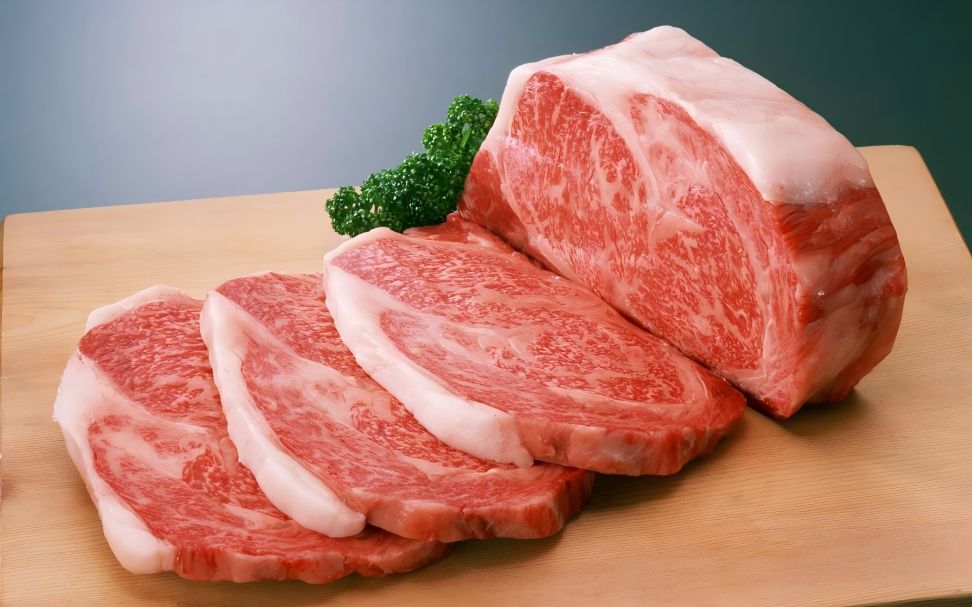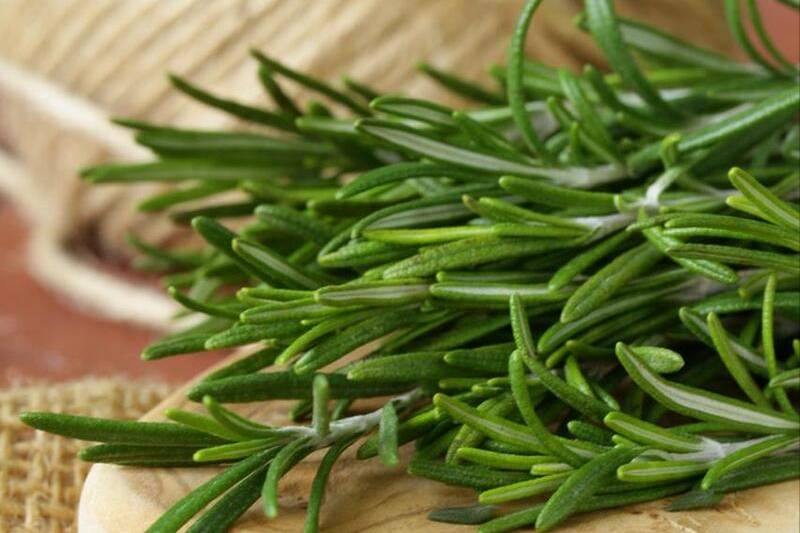How to Extract Rosemary Oil?
Rosemary is an important economic plant, and its essential oil extract contains α-pinene, 1,8-eucalyptol, camphene and other components, which are widely used in medicine, food, cosmetics and clinical medical treatment due to its aromatic odor and antibacterial, antioxidant and anti-aging biological activities. This paper summarizes the extraction methods of rosemary essential oil, and compares and analyzes the extraction rate and chemical content of the essential oil under different extraction methods and conditions. In addition, the research progress of its bactericidal and insecticidal activities in recent years is summarized to provide reference and basis for the development of pesticides using rosemary as a plant source.
Rosmarinus officinalis is an evergreen shrub in the genus Rosmarinus of the family Labiatae. The main parts of rosemary are stems and leaves, the leaves are elongated and green, and during the growing season they emit a sweet and piney odor, which has a refreshing and invigorating effect [1]. It is native to the Mediterranean coast, with Spain, Morocco, Yugoslavia, Bulgaria, and Tunisia as the main places of origin[2]. It was planted as a spice crop by the Institute of Botany of the Chinese Academy of Sciences in 1981, and is now cultivated in many provinces south of the Yangtze River and in Beijing, Xinjiang, and other places[3]. In Hunan Province, Changsha City, Yueyang City, Changde City and Hengyang City are the main planting areas. As of 2014, the area planted with rosemary in Hunan has exceeded 6000 mu, and the output value of this industry has exceeded 20 million yuan [4].
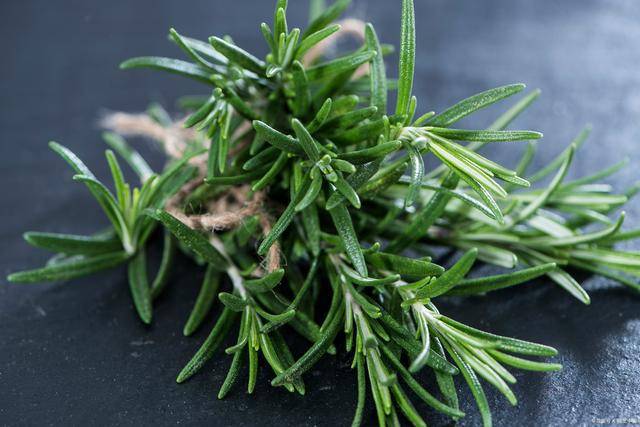
1 Comparison of the extraction methods and extraction efficiency of rosemary essential oils
The oil containing volatile components extracted from rosemary stems and leaves is called rosemary essential oil, which consists of more than 30 kinds of volatile components. Currently, there are several methods for extracting rosemary essential oil: steam distillation, supercritical CO2 extraction, enzyme-assisted extraction, microwave-assisted extraction, simultaneous distillation extraction, ultrasonic-assisted extraction, and so on.
1.1 Rosemary essential oil extraction methods
Different essential oil extraction methods have their own advantages and disadvantages, and their extraction efficiencies are also different. Below, we will focus on six essential oil extraction methods, including water vapor distillation, supercritical CO2 extraction, and enzyme-assisted extraction.
Water vapor distillation is a method of extracting essential oils from plants by utilizing the characteristics that the volatility of plant aromatic oils is strong and easy to be brought out by water vapor and separated from water after cooling. Spices and water constitute an immiscible system of essential oils and water, when heated, as the temperature increases, the essential oils and water to accelerate the evaporation, resulting in a mixture of vapors, the vapors through the top of the pot gooseneck into the condenser to get the liquid mixture of water and essential oils, after the separation of oil and water can be obtained after the essential oil products. The advantage is simple and less expensive, the disadvantage is time-consuming, the whole process will be accompanied by high temperature, which can make the heat-sensitive components of rosemary essential oil volatilization, but also can make the hydrolysable substances faster hydrolysis [5].
Bi Zhicheng[6] showed that the essential oil of rosemary stem and leaf powder with a particle size of 0.125-0.106 mm was extracted by steam distillation, and the yield of the essential oil was 1.32% when the material-liquid ratio was 1︰10 and the extraction was carried out for 2.5 h. Zhang Liying[7] showed that the essential oil of rosemary stem and leaf was extracted with high temperature, which could cause the volatilization of the heat-sensitive components in rosemary essential oil. Li-Ying Zhang[7] found that the final yield of essential oil was 1.86% when the dried fall rosemary was extracted by steam distillation at a feed/liquid ratio of 1︰8 at a temperature of 120 ℃ for 2 hours from a dried material of 3~5 mm in length.
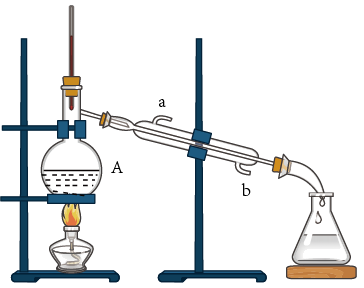
Ouassila Larkeche [8] used hydrodistillation to extract the essential oil of rosemary, and the yield of the essential oil was 1.92% at a feed/liquid ratio of 20︰1, a condensate flow rate of 4.51 mL/min, and a distillation time of 2 hours.
Supercritical CO2 extraction method is through the use of supercritical CO2 under high pressure and supercritical state and plant powder contact, so that it selectively extracts the polar size, boiling point and molecular weight of the components of different sizes sequentially, and then through the decompression and warming method to make the liquid CO2 vaporization into gas, so as to separate from the extracted products. Supercritical CO2 extraction is a combination of extraction and separation processes. Lai Naiwei et al. found that the best essential oil extraction effect was achieved when the extraction temperature was 40 ℃, the extraction pressure was 20 MPa, the extraction time was 120 min, and the CO2 flow rate was 25 L/h, resulting in a yield of 1.98% [9].
Enzyme-assisted extraction of essential oils is based on the principle that enzymes can break down plant tissues under mild conditions, thus substantially increasing the yield of essential oils. Currently, cellulase is the main enzyme used. The active ingredients of plants are encapsulated in the cell wall, which in most plants contains cellulose. Under the action of cellulase, the cell wall is destroyed, thus facilitating the dissolution of the active ingredients. Zhang Linlin found that the oil yield of rosemary leaves was 1.89% after 2 h of enzymatic hydrolysis with 0.2% cellulase addition, 30 ℃, pH=3, and conventional steam distillation method [10].
Microwave-assisted water vapor distillation is based on the water vapor distillation method, the use of electromagnetic fields to make solid or semi-solid substances in certain organic components and the matrix of effective separation, and can maintain its original compound state. This method is characterized by fast extraction speed, high yield, easy operation and avoiding decomposition of components. Fan Lin found that when the extraction power was 500 W, the microwave time was 40 min, and the fineness of pulverization was 400 mesh, the maximum yield of rosemary essential oil could reach 4.25% [11].
Simultaneous distillation extraction is the use of sample vapors and extraction solvent vapors in a closed device fully mixed, the components in the respective boiling point below the distillation can be distilled out, the boiling point of the mixture will remain unchanged during the distillation, and when one of the components is completely evaporated out of the temperature rises to the boiling point of the components left in the bottle. The volatile components are first distilled and then extracted with the extractant on a spiral condenser tube, separated by the difference in specific gravity between the extractant and water, and the extract recovered. This method is an effective method for simultaneous extraction and separation of volatile and semi-volatile components, which is characterized by simple operation, low solvent usage, good reproducibility and high extraction rate. Bi et al. found that when rosemary the essential oil yield was 4.18 % obtained by distillation extraction at a material-liquid ratio of 1︰8 for 2 h after sieving the dried powder of the leaves of Stemona caryophyllata through a sieve of 120-140 mesh [12].
The ultrasound-assisted extraction method makes use of the special effects of ultrasonic vibration, such as cavitation, crushing and stirring, to destroy plant cells, so that the solvent penetrates into the plant cells, accelerates the entry of active ingredients into the solvent, and strengthens mass transfer. Chao Li used ultrasound-assisted extraction to extract the essential oil of rosemary, and found that the yield of the essential oil was 1.54% when the liquid/feed ratio was 1︰10, the extraction temperature was 50 ℃, and the ultrasound was performed for 35 min [13].
1.2 Effects of different extraction methods and sampling conditions on the extraction rate of essential oil of rosemary
Based on the above extraction methods [7-11] (all optimal extraction processes), the extraction yields and relative contents of rosemary were summarized in Table 1, which showed that the microwave-assisted distillation method gave the highest yield of rosemary essential oil, which reached 4.25 %. Although the yield of rosemary essential oil extracted by supercritical CO2 extraction was only 1.98%, the relative content of active ingredients in the essential oil was the highest, reaching 100%.
Table 1 Yield and relative content analysis of rosemary essential oil extracted by different extraction methods
In addition to different extraction methods, different harvesting seasons, cultivation areas and plant ages may affect the essential oil yield of rosemary.
Pan Yan [14] analyzed the effects of different extraction sites (branches and leaves), cultivation areas (Beijing, Guizhou Qiannan), harvesting seasons (June, September and December) and plant ages (2, 4 and 10 years) on the essential oil extraction rate and chemical composition of rosemary by GC-MS. Significant differences (P<0.05) were found in the essential oil yields of rosemary leaves and twigs harvested in different seasons. The essential oil extraction rates of leaves and twigs were higher in summer (June) (3.13 and 0.68%) than in winter (December) (2.35 and 0.26%), and the rates of leaves were higher than those of twigs. Comparison of the essential oil extraction rates of rosemary harvested from different cultivation areas showed that the rate of oil extraction from rosemary cultivated in Beijing (4.04 %) was significantly higher than that from Guizhou (2.71 %); while the increase in plant age did not have a significant effect on the rate of essential oil extraction, chemical composition and relative content of rosemary.
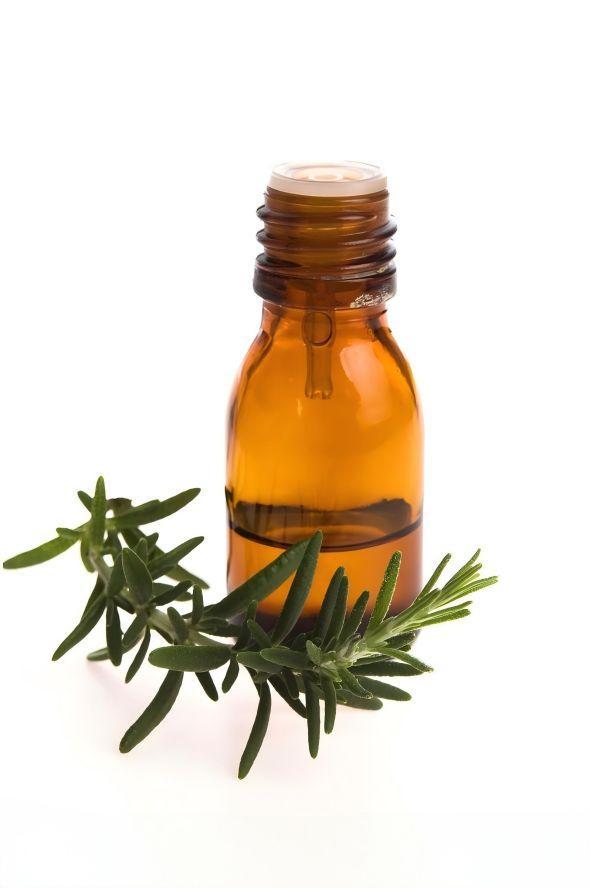
2 Analysis of the active ingredients of rosemary essential oil
Among the relative contents of rosemary essential oil, α-pinene, 1,8-eucalyptol, and camphor were the highest, and camphene, β-pinene, β-pinene, α-pinene, α-pinene, pinene-4-ol, naphthol acetate, naphthol, and veratryl ketone were also the main active ingredients in the essential oil of rosemary [4].
Chen Liang [15] used water vapor distillation to extract the essential oil, and after ether extraction, analyzed by GC-MS technology, found that the effective chemical components of the essential oil of dried leaves of rosemary (95) were less than those of the fresh leaves (99), but the relative content was higher than that of the fresh leaves (the relative content of the essential oil of dried leaves).In addition, 1,8-eudesmolgin was the main component of the two essential oils, with 20.97% and 22.05%, respectively, and both essential oils also contained camphor and naphthol.
Jiang Dongyue [16] used headspace-solid phase microextraction (HSPME) for the extraction of rosemary leaves collected at different moments of the day in different months, and the extracted essential oils were analyzed by GC-MS, and the results are shown in Tables 2 and 3.
It can be seen from the results that among the different months of the year, the essential oils of rosemary collected in June had the most varieties of components and the highest relative contents; among the different moments of the day, the essential oils of rosemary collected at 14:00 had the most varieties of components and the highest relative contents. α-pinene and 1,8- eucalyptol were the main components of the essential oils of rosemary, and the highest contents were as high as 65.47% and 1,8- eucalyptol.16.85 %, representing 82.32 % of the relative content.
3 Studies on the activity of rosemary essential oil
Rosemary essential oil has antibacterial, anti-inflammatory, antioxidant, antidepressant and anticancer properties, and is widely used in the food, pharmaceutical, flavor and fragrance, and cosmetic industries. Currently, the antioxidant effect of rosemary essential oil is mainly used in food preservation and anticorrosion. Studies have shown that the addition of rosemary powder, extract or essential oil can effectively inhibit the production of lipid oxidation products such as thiobarbituric acid reactive substances (TBARS) and hexanal, inhibit the oxidation of proteins, and maintain the organoleptic qualities of the products during storage, as well as have a good effect on the color of products [17]. 17]. The antibacterial and insecticidal activities of rosemary essential oil will be discussed in the following.
3.1 Bacteriostatic activity of rosemary essential oils
Jia Jia et al. used the agar diffusion method to determine the antibacterial activity of rosemary and cinnamon essential oils. When cinnamon and rosemary essential oils were mixed in the ratio of 1:7 and 1:9, they showed antagonistic effect on Aspergillus niger and synergistic effect on Candida albicans, which had broad-spectrum antibacterial activity [18]. In another study, Propionibacterium acnes was treated with a mixture of rosemary and clove essential oils, and the morphological changes of the bacteria were observed before and after the treatment. It was found that as the concentration of the essential oils and the time of action increased, the degree of destruction of the bacterium increased, and the destruction of the cell wall and the cell membrane, the bacterium collapsed, the cytoplasm overflowed, and the bacterium became smaller in size, and so on. This study showed that the antimicrobial activity of a mixture of rosemary and clove essential oils against Propionibacterium acnes exhibited antagonistic effects on Aspergillus niger. This study showed that the mixture of rosemary essential oil and clove essential oil showed synergistic, increasing and antagonistic effects on the antibacterial activity of Propionibacterium acnes, which can be made into a highly effective, non-toxic and non-stimulating preparation, and provides a theoretical basis for the use of rosemary essential oil in the treatment of acne.
Kong Jingsi [20] investigated the antimicrobial activity of rosemary essential oil and found that it inhibited Escherichia coli, Staphylococcus aureus, Bacillus subtilis, Staphylococcus albus, and Pseudomonas aeruginosa. Liu Qian [21] studied the antibacterial effect of rosemary essential oil in vitro using a drug sensitivity test, and found that rosemary essential oil had good antibacterial effect in vitro, and was able to alleviate the inflammatory symptoms of pneumonia caused by Staphylococcus aureus. Rosemary essential oil also has anti-tumor effects, and can induce apoptosis of HepG2 cells in liver cancer and Hela cells in cervical cancer, and inhibit the growth of Hela cells in cervical cancer [22-23].
In terms of plant diseases, Zhao J et al. found that rosemary essential oil had some antibacterial activity against Fusarium tandemi, Fusarium melongena, Fusarium anthracnose, Fusarium melongena, Fusarium gray mold, Fusarium melongena wilt, Fusarium pear rot, Fusarium citrus black rot, Fusarium canola, Fusarium faba bean verticillium, and Botrytis perforans of peach [24].
3.2 Insecticidal Activity of Rosemary Essential Oil
Rosemary essential oil is an ovicidal agent against Anopheles stephensi, Aedes ciatus and Culex quinquefasatus [25]. The oil of rosemary has repellent activity against Myzus persicae, Aedes aegypti and Acanthoscelides obtectus[26] , and the odor of the plant has a repellent effect on adult tea geometrid Ectropis obliqua. The volatile components of rosemary from Yunnan have obvious avoidance activity against Aedes albopictus [27].
Mehdi Khoobdel [28] used a nanoprecipitation method to prepare nanocapsules containing rosemary essential oil. The touch and fumigation activities of rosemary essential oil nanocapsules were determined at 27~30 ℃ and 70%~75% relative humidity against M. heterophylla at 3.20 μL/L, 15.92 μL/L, 19.12 μL/L, 23.04 μL/L and 27.76 μL/L for the former treatment and 4.28 μL/cm3 for the latter treatment, respectively, 3.55 μL/cm3 , 2.95 μL/cm3 , 2.45 μL/cm3 and 2.36 μL/cm3 , the results revealed that rosemary essential oil nanocapsules possessed significant touch and fumigant activity against M. heterophylla. According to Ainane [29], the essential oil of rosemary also has some food repellency against C. heterophylla.
Cheng Zuohui et al. [30] determined the biological activities and protective enzymes of rosemary essential oil on female adult mites of the mite Vespertilionidae by slide impregnation method, and the mortality rates of female adult mites were 24.81%, 37.4% and 68.15% with corresponding LC50s of 58.43%, 15.06% and 0.35% after 24 h, 48 h and 72 h of treatment, respectively, with 2.0% of essential oil of rosemary; After the treatment with rosemary essential oil, the female adult mites showed activation of SOD and POD and inhibition of CAT. Therefore, it can be assumed that the treatment of female adult mites with rosemary essential oil increased the number of free radicals in their bodies, resulting in toxic effects.
Jun-Hyung Tak et al. [31] showed that the combination of rosemary essential oil and enzyme inhibitors resulted in a decrease in the insecticidal activity of rosemary against N. obliqua, while no antagonistic effect was observed when rosemary oil was used alone, suggesting that enzyme inhibitors may affect the penetration of rosemary essential oil into the epidermis of N. obliqua.
Giovanni Benelli et al [32] investigated the insecticidal activity of rosemary essential oil against Culex tarda, C. obliquus and C. domestica and evaluated the environmental toxicology, and found that the essential oil of rosemary had a significant inhibitory effect on the growth of Culex tarda, C. obliquus and C. domestica. In addition, the environmental toxicological evaluation of rosemary essential oil showed that it was non-toxic to earthworms and moderately toxic to water fleas. Previous studies have also shown that rosemary essential oil and preparations containing rosemary essential oil are harmless to humans and can be further developed as antibacterial or mosquito repellent creams [27].
Chen Langlong et al. [33] found that interplanting rosemary significantly reduced the incidence of insect pests in young oil tea forests, and the insect pest index of oil tea forests could be reduced by 91.1 %, which may be attributed to the repellent effect of the unique aromatic odor of rosemary on green leafhopper, a major pest of oil tea. Liu Shutong [34] found that both rosemary stem and leaf extracts and inter-root soil extracts had chemosensitizing effects on oil tea. When the concentrations of rosemary stem and leaf extracts and inter-root soil extracts were 25 g/L, the oil tea would produce a positive chemosensitization effect; with the gradual increase in the concentration of the extracts, the chemosensitization effect of the oil tea gradually transitioned from a positive effect to a negative effect, which showed the chemosensitization effect characteristic of "low urging and high inhibition". Because the low concentration of rosemary extract has chemosensitization effect on oil tea, in actual production, a certain planting density of rosemary and oil tea can be intercropped to improve the yield of oil tea.
4 Conclusion and outlook
Rosemary is an important economic plant grown in Hunan province, and it is currently of great value in the pharmaceutical, food and cosmetic industries. The volatile odor of rosemary can play a significant role in regulating the behavior of pests, and studies have shown that in addition to its repellent effect, its volatile odor also has a fumigating effect on storage pests. As a next step, we can carry out research on the inhibitory effect of rosemary essential oil on the growth, development and propagation of agricultural pests, and screen out the active ingredients for controlling agricultural pests, so that we can develop plant-derived insecticides. At present, the state has implemented the "two reductions policy" and vigorously promoted bio-source pesticides. Fungicides, repellents and fumigants developed from rosemary are plant source pesticides, which are safe and environmentally friendly, and are in line with the national policy as well as the needs of sustainable agricultural development.
Reference:
[1] Huang Yu-Ting. Rosemary cultivation technology and its application[J]. New Rural Technology, 2019,(10):8-10.
[2] XU Pengxiang, JIA Weimin, Biliangwu, et al. Compositional analysis and quality study of essential oils of rosemary from different origins[J] . Journal of Analytical Science, 2003,(04):361-363.
[3] Lu Cuihua. Cultivation and antioxidant test of rosemary[J]. Chinese wild plants, 1992,(3): 17-21.
[4] Competitive Intelligence Research Center . Rosemary Industry Competitive Intelligence Research Report(VI) . Hunan Science and Technology Information Research Institute (http://www.hninfo.org.cn/) , 2019-07-08 .
[5] Wang Xuhuan, Sun Weiwei, Ji Xinyan, et al. Research progress of essential oil extraction process of rosemary[J]. Journal of Shanxi College of Traditional Chinese Medicine, 2015, 16(10): 73-76.
[6] Bi Zhicheng. Extraction, isolation and purification of rosemary essential oil and water-soluble and fat-soluble antioxidants [D]. Central South Forestry University of Science and Technology, 2013.
[7] Zhang Liying, Fan Hongri, et al. Optimization of essential oil extraction process of rosemary[J]. Shizhen Guojian, 2012, 23(12): 3061-3062.
[8] Ouassila Larkeche , Ahmed Zermane , Abdeslam-Hassen Meniai , et al. Optimization of hydrodistillation of rosemary essential oil: comparison with International Journal of Energy Optimization and Engineering (IJEOE) , 2020 , 9(3) : 51-61 .
[9] Lai Naiwei, Ma Lijie, Jin Haizhu. Extraction of major volatile components from rosemary by supercritical CO2 fluid extraction[J] . Food Research and Development, 2014 , 35(14): 47-49 .
[10] Zhang Linlin . Enzyme-assisted extraction of essential oil of rosemary and its anti-inflammatory effects[D] . Tianjin University of Science and Technology, 2010 .
[11] Fan Lin. Research on the process of extracting essential oil of rosemary by microwave method[J]. Science and Technology Wind, 2020(10): 158 .
[12] BI Zhicheng, YANG Guoen . Extraction of essential oil from dried rosemary leaves and its chemical composition[J]. China Flavoring, 2013 , 38(05): 95-99.
[13] Li Chao. Process optimization of ultrasound-assisted extraction of volatile oil from rosemary[J] . China Flavorings, 2015, 40(06) : 62-64+67 .
[14] PAN Yan, BAI Hongtong. Effects of cultivation area, harvesting season and plant age on essential oil composition and bacteriostatic activity of rosemary[J]. Journal of Botany, 2012 , 47(06): 625-636 .
[15] CHEN Liang, HU Ya-ning . GC-MS analysis of essential oil composition of rosemary leaves before and after drying[J]. Jiangsu Agricultural Science, 2019 , 47(24): 171-176.
[16] JIANG Dongyue, CHEN Yajing, LI Yonghong, et al. Study on the composition and change pattern of volatile organic compounds released from rosemary[J] . Journal of Southwest Forestry University (Natural Science) , 2018 , 38(01): 140-150 .
[17] Zorica Stojanović-Radić , Milica Pejčić , Nataša Joković , et al. Inhibition of Salmonella enteritidis growth and storage stability in chicken meat treated with basil and rosemary essential oils alone or in combination[J]. Food Control , 2018 : 90 , 332-343 .
[18] Jia Jia, Wu Yan, Su Lifen, et al. Research on antibacterial activity of rosemary essential oil and cinnamon essential oil[J]. Heilongjiang Medicine, 2015 , 28(01) : 8-11 .
[19] Chen Li-Yan . Anti-Propionibacterium acnes activity of clove and rosemary essential oils, mechanism of action and preparation of coating agent [D]. Northeast Forestry University, 2008.
[20] KONG Jing-Shi . Research on antibacterial and antioxidant activities of three aromatic plants and GC/MS analysis[D] . East China Normal University, 2011.
[21] LIU Qian, CAO Shuo, ZHANG Hao, et al. Interventional effects of rosemary essential oil on mice infected with Aureobasidium aureus[J]. Journal of Bejing Agricultural College, 2019 , 34(02): 71-76.
[22] WEI Fengxiang, LIU Junxing, WANG Lin, et al. Study on the changes of bcl-2 and bax gene expression in hepatocellular carcinoma HepG 2 cells after induction of apoptosis by rosemary essential oil[J]. Chinese Materia Medica, 2008 ,(06): 877-879.
[23] WEI Fengxiang, LI Meiyu, WANG Lin, et al. Experimental study on the induction of apoptosis in cervical cancer Hela cells by rosemary essential oil[J]. Journal of Sun Yat-sen University (Medical Science Edition) , 2008 , 29(S1): 23-25 .
[24] ZHAO Jie, NI Xiuhong . Research on the antibacterial activity of rosemary essential oil on several plant pathogenic bacteria[J] . North China Horticulture, 2009(9):33-35 .
[25]Gillij Y G , Gleiser R M , Zygadlo J A. Mosquito repellent activity of essential oils of aromatic plants growing in Argentina[J] . Bioresource Technology, 2008 , 99(7):2507-2515 .
[26] Zheng-qun Zhang, Xiao-ling Sun, Zhao-jun Xin, et al. Identification and field evaluation of non-host volatiles disturbing host location by the tea geometrid, Ectropis oblique[J].Journal of Chemical Ecology, 2013, 39(10): 1284-1296.
[27] Li Li, Fan Quanbing, Qiu Wei, et al. Repellent effects of essential oil of rosemary on Aedes albopictus and its chemical composition[J]. Insect Knowledge, 2010, 47(03):533-537.
[28]Mehdi Khoobdel , Seyed Mohammad Ahsaei , Mohsen Farzaneh .Insecticidal activity of polycaprolactone nanocapsules loaded with Rosmarinus officinalis essential oil in Tribolium castaneum (Herbst) [J].Entomological Research , 2017 , 47(3): 175-184.
[29]Ainane , Khammour F , Charaf S , et , al. Chemical composition and insecticidal activity of five essential oils : Cedrus atlantica, Citrus limonum Rosmarinus officinalis , Syzygium aromaticum and Eucalyptus globules [J].Materials Today:Proceedings , 2019, 13(3):474-485 .
[30] CHENG Zuohui, TIAN Yongming, FAN Fangfang, et al. Effects of essential oil of rosemary on the protective enzyme activity of the mite, Eriocheir japonica[J] . Journal of Gansu Agricultural University, 2020 , 55(05): 129-135 .
[31] Jun-Hyung Tak , Eduardo Jovel , Murray B Isman .Effects of rosemary, thyme and lemongrass oils and their major constituents on detoxifying enzyme activity and insecticidal activity in Trichoplusia ni[J].Pesticide Biochemistry and Physiology, 2017, 140 : 9-16 .
[32]Giovanni Benelli , Roman Pavela , Kevin Cianfaglione , et al. Ascaridole-rich essential oil from marsh rosemary (Ledum palustre) growing in Poland exerts insecticidal activity on mosquitoes, moths and flies without serious effects on non-target organisms and human cells[J]. Food and Chemical Toxicology, 2020, 138: 111184 .
[33] CHEN Langlong, YANG Xiaohu, LI Zhigang, et al. Effects of interplanting rosemary on the growth and pests of young oil tea forest[J] . Journal of Central South Forestry University of Science and Technology, 2016 , 36(05) : 38-40+46 .
[34] Liu Shutong. Research on the chemosensitization effect of rosemary on oil tea [D]. Central South Forestry University of Science and Technology, 2020 .


 English
English French
French Spanish
Spanish Russian
Russian Korean
Korean Japanese
Japanese